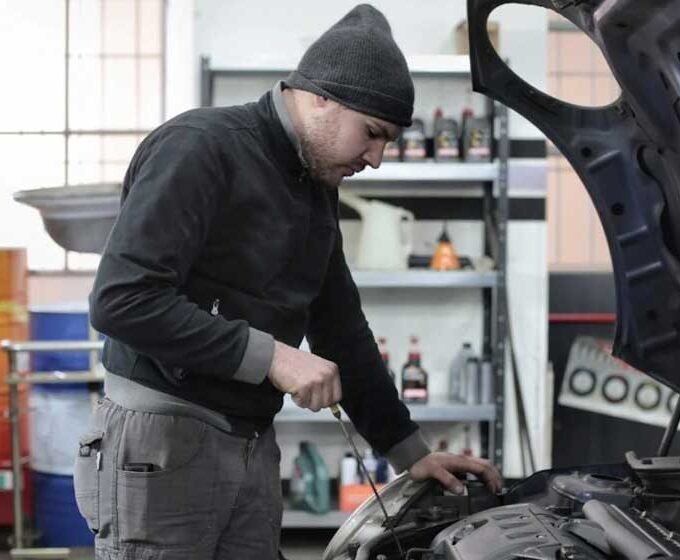Car troubles can be a major inconvenience, and while taking your vehicle to a mechanic is often necessary, many common issues can be diagnosed and fixed at home. Learning to troubleshoot these problems yourself can save you time and money, and give you a greater understanding of your vehicle. This guide will walk you through some of the most frequent car problems and how to address them without the need for professional help.
Understanding Car Symptoms
The first step in troubleshooting car problems is understanding the symptoms your vehicle is displaying. Cars have a way of telling you when something is wrong, whether it’s through strange noises, warning lights, or changes in performance. Here are some common symptoms and what they might indicate:
- Strange Noises: Unusual sounds such as squealing, grinding, or knocking can indicate problems with brakes, belts, or the engine.
- Warning Lights: Dashboard warning lights are the car’s way of communicating specific issues. Each light has a different meaning, and referring to your owner’s manual can help you understand them.
- Performance Changes: If your car is sluggish, has trouble starting, or exhibits poor fuel efficiency, these could be signs of underlying issues.
By paying attention to these symptoms, you can narrow down the potential problems and take appropriate action.
Diagnosing Engine Problems
The engine is the heart of your vehicle, and when it’s not functioning properly, it can cause a range of issues. Here are some common engine problems and how to diagnose them:
- Engine Won’t Start: If your engine won’t start, it could be due to a dead battery, faulty starter, or lack of fuel. Check the battery terminals for corrosion and ensure they are tightly connected. If the battery is fine, listen for a clicking sound when you turn the key, which could indicate a problem with the starter.
- Overheating: An overheating engine can be caused by a low coolant level, a faulty thermostat, or a broken radiator fan. Check the coolant reservoir and top it up if necessary. Inspect the radiator and hoses for leaks.
- Engine Misfires: Misfires can occur due to worn spark plugs, faulty ignition coils, or issues with the fuel system. Inspect the spark plugs and replace them if they are dirty or worn out.
Fixing Common Electrical Issues
Electrical problems in your car can range from minor annoyances to major issues that prevent your vehicle from running. Here are some steps to troubleshoot common electrical problems:
- Dead Battery: If your car won’t start and the lights are dim, you likely have a dead battery. Use a multimeter to check the battery voltage. A fully charged battery should read around 12.6 volts. If the voltage is low, try jump-starting the car or charging the battery.
- Faulty Alternator: If your battery keeps dying, the alternator might not be charging it properly. Check the alternator belt for wear and ensure it is tight. Use a multimeter to check the output voltage of the alternator; it should be around 14 volts when the engine is running.
- Blown Fuses: If certain electrical components like lights or the radio aren’t working, check the fuse box for blown fuses. Replace any blown fuses with ones of the same amperage.
Troubleshooting the Braking System
Your car’s braking system is crucial for safety, and it’s essential to ensure it is always in good working order. Here are some common braking issues and how to address them:
- Squeaky Brakes: Squeaky brakes can be caused by worn brake pads, glazed pads and rotors, or lack of lubrication on the brake pad backing. Inspect the brake pads and replace them if they are worn down.
- Soft Brake Pedal: If the brake pedal feels soft or spongy, it could indicate air in the brake lines or a brake fluid leak. Bleed the brake lines to remove any air and check for leaks in the brake system.
- Vibration When Braking: If you experience vibrations when braking, it might be due to warped rotors. Inspect the rotors and have them resurfaced or replaced if necessary.
- Brake Warning Light: If the brake warning light is on, check the brake fluid level and top it up if needed. If the light remains on, it could indicate a more serious issue that requires professional attention.
Addressing Heating and Cooling System Failures
The heating and cooling systems in your car are essential for comfort and engine performance. Here’s how to troubleshoot common issues:
- No Heat: If the heater isn’t working, it could be due to a low coolant level, a stuck thermostat, or a faulty heater core. Check the coolant level and top it up if necessary. If the problem persists, the thermostat may need to be replaced.
- Air Conditioning Issues: If the air conditioning isn’t blowing cold air, it could be due to a refrigerant leak, a faulty compressor, or a clogged condenser. Check for obvious signs of leaks under the hood and have the refrigerant levels checked and recharged if needed.
- Radiator Problems: Overheating issues can also stem from a malfunctioning radiator. Inspect the radiator for leaks and ensure the cooling fans are operating correctly. Flush the radiator if it appears clogged.
DIY Fixes for Steering and Suspension Problems
Steering and suspension problems can affect your car’s handling and safety. Here are some common issues and how to address them:
Steering Wheel Vibration: If you feel vibrations through the steering wheel, it could be due to unbalanced tires, worn suspension components, or misalignment. Check the tire balance and look for any visible signs of wear in the suspension system.
- Pulling to One Side: If your car pulls to one side while driving, it could be due to improper wheel alignment, uneven tire pressure, or a sticking brake caliper. Ensure all tires are properly inflated and check the alignment.
- Bouncing After Bumps: If your car bounces excessively after hitting a bump, it could indicate worn shock absorbers or struts. Inspect these components for leaks and damage, and replace them if necessary.
Mastering Troubleshooting Your Vehicle
Learning to troubleshoot and fix common car problems not only saves you money but also empowers you as a car owner. By understanding the symptoms and knowing how to diagnose and address issues, you can keep your vehicle running smoothly without frequent trips to the mechanic. Always consult your vehicle’s manual for specific instructions and safety precautions related to your car model. With the right tools and a bit of patience, you’ll be surprised at what you can achieve.
By following these guidelines and performing regular maintenance, you can extend the life of your car and ensure it remains reliable. Remember, while DIY repairs are great, don’t hesitate to seek professional help for complex issues or if you’re unsure about any step in the process.
















